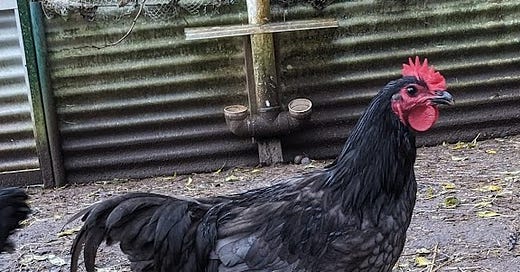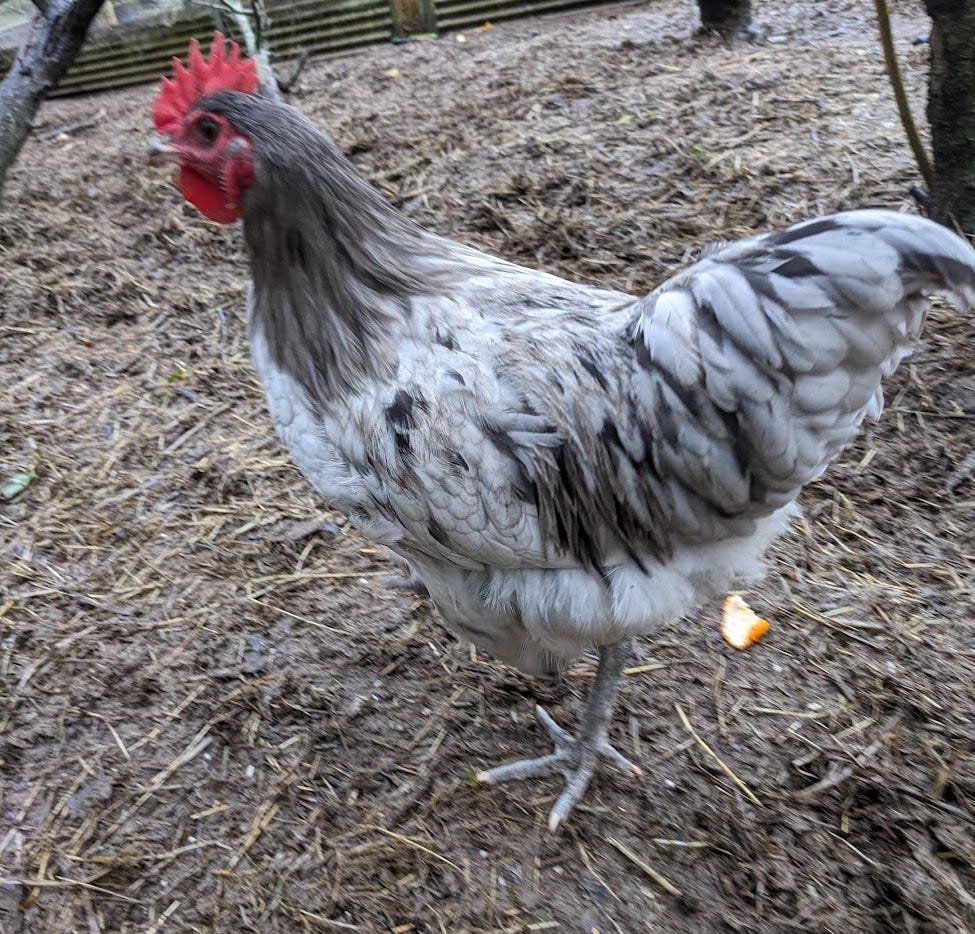A sound drifts through the pre-dawn darkness. Befuddled by sleep I can neither identify nor place it. Then suddenly I am awake, cocooned in warmth and listening properly. It’s unmistakable now. Cock-a-doodle-doo! Cock-a-doodle-doo! Although it’s not as clear as that makes it sound. It’s more cooka-cooka-crrrr! The roosters have started crowing, their adolescent voices breaking over the early morning cry embedded deeply in their genetics.
They are my roosters. This cacophony is my responsibility.
Back in February I bought a dozen day-old Australorp chicks. Unsexed. A bit of a gamble but I had the space and I liked the idea of raising a clutch of chicks again. I’ve done it many times before and have found the odds usually stack a little towards the male side of the chromosomes. One batch of eight I raised had only one hen among them, as did another clutch of four. I’ve never tipped the scales anywhere near even numbers let alone ventured into the positive territory of more hens than roosters, but I happily bought the twelve chicks thinking I’d get a nice addition of hens to my large chook pen.
I successfully raised all twelve through the vulnerable pre-feathered stage when they are unable to maintain their own body temperature and must be kept warm by an external heat source. In this case, a repurposed bedside light, the base of which quickly became covered in chook poo to an extent that renders it unfit to ever again be seen in a bedroom.
When the chicks were fully feathered I relocated them from the confines of the shed out to the chook pen to finish their growing.
The first inkling of the difference between the sexes that I can accurately pick up is in the development of their combs. The males get a bigger comb earlier, the females have smaller, daintier combs – yes, I’m going to say it; they look more feminine. But even before that there is a certain bolshy strut to the young roosters that makes me suspicious. They start facing off to each other, sparring in mock chook-yard battles. At four months of age, the young cockerels in my flock were readily apparent – their tails had started growing the lustrous long feathers roosters are noted for. Their legs lengthened, making them taller than their sisters.
And now the crowing.
I don’t want a rooster. Well, that’s not true. I would quite like to add a rooster to my chook pen but I’m not convinced I should keep one of these. There is the question of them likely being related to at least some of the hens (I don’t know how big the flock was that they came from, so don’t know the diversity of the relationships among my dozen chicks). But I do have some older hens that are not at all related to these youngsters, so one of these roosters would not be a terrible choice.
A lot of poultry fanciers say hens are happier with a rooster in the flock. Providing there aren’t too many roosters for the number of hens. That can get ugly for all involved. The roosters fight and the hens get more attention than they want.
I quite like the sound of a rooster crowing in the morning. On the other hand, let’s just say there is some resistance in my household to the idea of a rooster in the chook pen.
And when I say that I quite like the idea of a rooster, the emphasis in on the singular – A rooster. Not half a dozen, but half a dozen is what I ended up with from my dozen baby chicks. It could have been worse, of course. As I said, it often has been with previous clutches. But I had thought it was about time my numbers stacked in favour of the girls.
The question now is what to do with the excess roosters.
‘Would you eat them?’ a friend asks. The short answer is yes. The longer answer is, I’ve done it before and it’s not a process I enjoy at all so I’d rather not. I do think there’s something to be said for those of us who choose to eat meat ‘owning’ meat production. (I write about this in my book, in particular about how removed from the reality most of us are and how that warps our perceptions.) I haven’t discounted the idea of the boys becoming dinner. In many ways it feels like the responsible thing to do.
But I have decided to explore other options.
One friend leaps at the idea of having an Australorp rooster join his flock. He chooses a strapping young blue one and suddenly I only have five, which feels much more manageable. There’s a light blue one that particularly appeals to me; he’s the friendliest and most inquisitive of the bunch, and he calls the girls over when he snatches a tasty morsel from the scraps I throw into the pen. Maybe I’ll keep him. That just leaves four; decision pending as to how to deal with them.
Of course, if I do keep a rooster, next spring I will likely end up with more chicks. And some of them will be roosters … and I’ll face this situation again. I’m in danger of stepping into a merry-go-round full of roosters.
Thanks for reading,
Jill






Can't imagine that lol
Dreaded noisy roosters lol